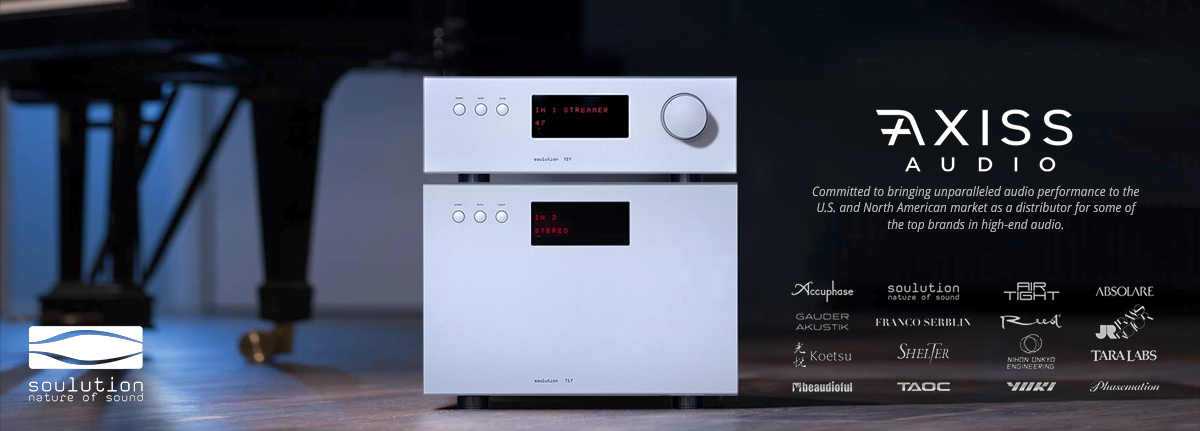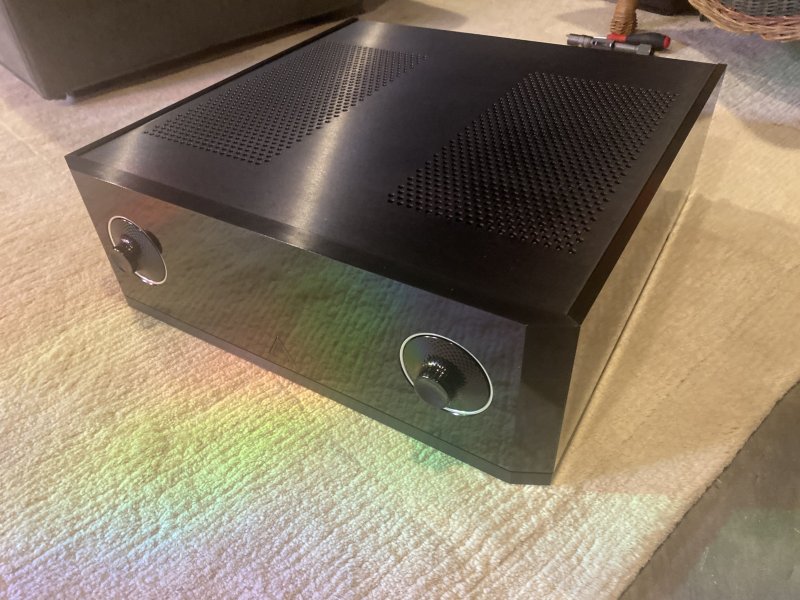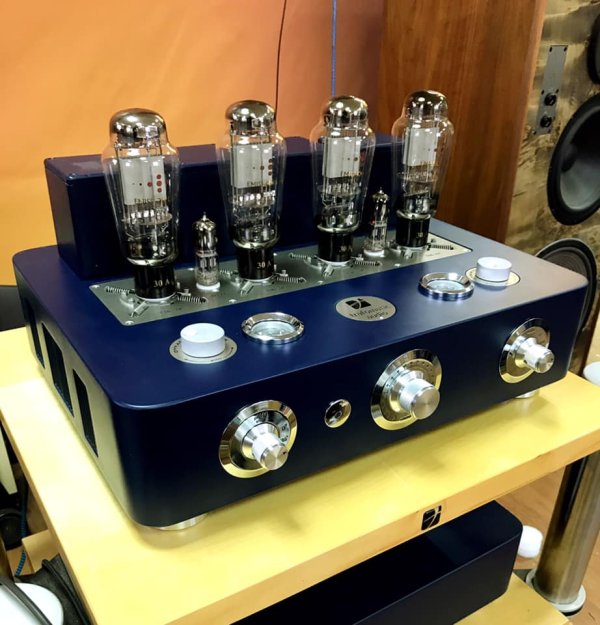Your All Time Favorite Preamplifiers?
- Thread starter musicfirst1
- Start date
You are using an out of date browser. It may not display this or other websites correctly.
You should upgrade or use an alternative browser.
You should upgrade or use an alternative browser.
A manufacture from Germany build a preamp with digital RIAA phono stage build in.
backesmüller.de ICE 525

 xn--backesmller-zhb.de
Plays phenomenal
xn--backesmller-zhb.de
Plays phenomenal
backesmüller.de ICE 525

Backes & Müller GmbH | Saarbrücken | BM ICE 500
Jede Quelle findet in dieser Serie den perfekten Partner für die Musikwiedergabe auf höchstem Niveau. Jetzt beraten lassen!
The Linn Klimax Kontrol was the best analogue pre amp I ever owned. It was originally a surprise present from my wife. For a long time it was my favourite bit of kit.
I was quite sad when it was superseded and bettered by the digital pre amp section of the Klimax DSM/1 a decade ago.
I was quite sad when it was superseded and bettered by the digital pre amp section of the Klimax DSM/1 a decade ago.
FMA 268c?
I don’t see the point of an active line stage preamplifier IF one’s objective is fidelity to the source material. Thus, I continue to use the constant-impedance resistor-based attenuator in my MSB Reference DAC, including with my analog sources. Is this approach truly transparent? I would argue that it is, by design and implementation, more transparent than an additional active component in the signal path. Specifically, all of my sources have sufficiently high gain and sufficiently low output impedance to drive my active line level crossovers and amplifiers (26 dB of gain). I assembled the components with this goal in mind.
Low gain amplifiers with inadequate phono stage gain for a given MC cartridge would obviously necessitate a different approach, i.e., an active line stage preamplifier with healthy gain (12-18 dB).
Does that mean that in my current system, a particular preamp might add something (a colouration) that just so happens to make my favourite music sound more realistic? Quite possibly. Unfortunately, adding the “secret sauce” without sacrificing transparency costs a ridiculous amount of money in 2025. Certainly too much for me to justify.
Low gain amplifiers with inadequate phono stage gain for a given MC cartridge would obviously necessitate a different approach, i.e., an active line stage preamplifier with healthy gain (12-18 dB).
Does that mean that in my current system, a particular preamp might add something (a colouration) that just so happens to make my favourite music sound more realistic? Quite possibly. Unfortunately, adding the “secret sauce” without sacrificing transparency costs a ridiculous amount of money in 2025. Certainly too much for me to justify.
What an active line stage can do that a passive resistor array cannot is reduce colorations from the interconnect cable. That is why the recording industry went to balanced lines back in the early 1950s. Basically how this works is if you can hear differences in the cables it means two things:I don’t see the point of an active line stage preamplifier IF one’s objective is fidelity to the source material. Thus, I continue to use the constant-impedance resistor-based attenuator in my MSB Reference DAC, including with my analog sources. Is this approach truly transparent? I would argue that it is, by design and implementation, more transparent than an additional active component in the signal path. Specifically, all of my sources have sufficiently high gain and sufficiently low output impedance to drive my active line level crossovers and amplifiers (26 dB of gain). I assembled the components with this goal in mind.
Low gain amplifiers with inadequate phono stage gain for a given MC cartridge would obviously necessitate a different approach, i.e., an active line stage preamplifier with healthy gain (12-18 dB).
Does that mean that in my current system, a particular preamp might add something (a colouration) that just so happens to make my favourite music sound more realistic? Quite possibly. Unfortunately, adding the “secret sauce” without sacrificing transparency costs a ridiculous amount of money in 2025. Certainly too much for me to justify.
1) you have system resolution to hear when cable operation is not working properly
2) and you're hearing that problem in real time.
That means that no matter how much you spent on the interconnect cable, its turning into a white elephant before your eyes. This is because the manufacturer of that cable (or someone like him) will have a better version next year. The only real conclusion you can thus draw is all the cables are just wrong.
The balanced line system relies on two things to make sure balanced cables don't have that problem (coloration).
The first is the connection standard, AES48, to which a passive resistive system would have a hard time being compliant since it requires that neither side of the balance line reference ground to complete the circuit. The second means is low impedance operation. For decades at line level 600 Ohms at the input of whatever the balanced output was driving was the standard. So the output was measured in dBm, which is a measurement of how many VU (Volume Units) you could get when driving a 600 Ohm load. 0VU thus being 1 milliwatt into 600 Ohms. Again, a passive resistive array has big problems doing that. FWIW there are two common dBm readings: -4dBm and +10dBM.
In the old days when tubes were King to get those levels an output transformer was used. Even though solid state has taken over, output transformers are still commonly used for this purpose. The trick is to get the -4dBm or whatever while neither side of the balanced connection references ground (IOW ground is used for shielding only and is ignored by the audio circuit path).
For this reason if using any DAC I know of, I would keep the interconnect cable short while driving an AES48 compliant line section that can make at least -4dBm (which will drive any power amp made).
ahhh...the stuff of legend...
If you listen to this you realize all other audio engineers are amateurs.
Which makes you wonder who made all those recordings out there??If you listen to this you realize all other audio engineers are amateurs.
Which makes you wonder who made all those recordings out there??
Ok i will narrow it down to amplifier engineers
Soooo … You seem to have had some form of audio epiphany on the road to Munich , and as a result you seem to be spamming the forum about this somewhat niche manufacturer of exceedingly expensive Bling Fi Viz FMA 268c . Curiously not many folks seem to be as rabid about FMA as you are , hardly any response at all to your several posts regarding this mythical audio electronics manufacturer !If you listen to this you realize all other audio engineers are amateurs.
So FMA are your new WADAX ?
Last edited:
I run inexpensive balanced interconnects from van den Hul (D102mk3What an active line stage can do that a passive resistor array cannot is reduce colorations from the interconnect cable. That is why the recording industry went to balanced lines back in the early 1950s. Basically how this works is if you can hear differences in the cables it means two things:
1) you have system resolution to hear when cable operation is not working properly
2) and you're hearing that problem in real time.
That means that no matter how much you spent on the interconnect cable, its turning into a white elephant before your eyes. This is because the manufacturer of that cable (or someone like him) will have a better version next year. The only real conclusion you can thus draw is all the cables are just wrong.
The balanced line system relies on two things to make sure balanced cables don't have that problem (coloration).
The first is the connection standard, AES48, to which a passive resistive system would have a hard time being compliant since it requires that neither side of the balance line reference ground to complete the circuit. The second means is low impedance operation. For decades at line level 600 Ohms at the input of whatever the balanced output was driving was the standard. So the output was measured in dBm, which is a measurement of how many VU (Volume Units) you could get when driving a 600 Ohm load. 0VU thus being 1 milliwatt into 600 Ohms. Again, a passive resistive array has big problems doing that. FWIW there are two common dBm readings: -4dBm and +10dBM.
In the old days when tubes were King to get those levels an output transformer was used. Even though solid state has taken over, output transformers are still commonly used for this purpose. The trick is to get the -4dBm or whatever while neither side of the balanced connection references ground (IOW ground is used for shielding only and is ignored by the audio circuit path).
For this reason if using any DAC I know of, I would keep the interconnect cable short while driving an AES48 compliant line section that can make at least -4dBm (which will drive any power amp made).
hybrid) with low capacitance.
I cannot hear a difference between interconnects used between the MSB Reference DAC passive resistor attenuator and my active line level crossovers. Furthermore, a constant output impedance of 300 ohms is lower than many active linestage preamps on the market.
It is, but not lower than a preamp that can drive -4dBm (which its doing into 600 Ohms...).I cannot hear a difference between interconnects used between the MSB Reference DAC passive resistor attenuator and my active line level crossovers. Furthermore, a constant output impedance of 300 ohms is lower than many active linestage preamps on the market.
Its good you're not hearing a difference. How many interconnect kinds have you tried?
Why would a linestage preamplifier (or source component with passive attenuator) need to drive a 600 ohm load?It is, but not lower than a preamp that can drive -4dBm (which its doing into 600 Ohms...).
It’s good you're not hearing a difference. How many interconnect kinds have you tried?
I made an error earlier, the MSB Reference DAC has a constant output impedance of 150 ohms with as much as 3.57 volts from digital sources or 12 volts from analog sources which see a 100k ohm input impedance. My Jeff Rowland Cadence provides 64 or 74 dB of gain and I run a 0.5 mV MC cartridge. That is well short of 1 volt and my 26 dB gain amplifiers (used in an active triamplified configuration) drive their respective speaker drivers to very loud levels with extremely low distortion and I am not even close to running the passive attenuators wide open.
Similar threads
- Replies
- 1
- Views
- 116
- Replies
- 22
- Views
- 3K
- Replies
- 3
- Views
- 193
- Replies
- 6
- Views
- 666
| Steve Williams Site Founder | Site Owner | Administrator | Ron Resnick Site Owner | Administrator | Julian (The Fixer) Website Build | Marketing Managersing |
























